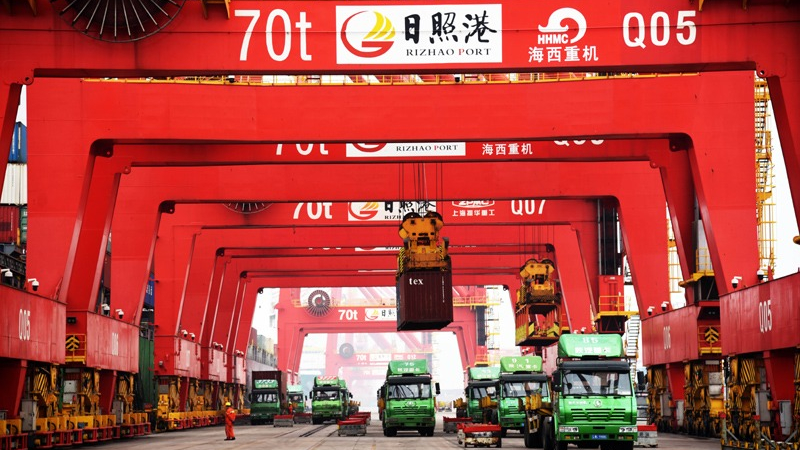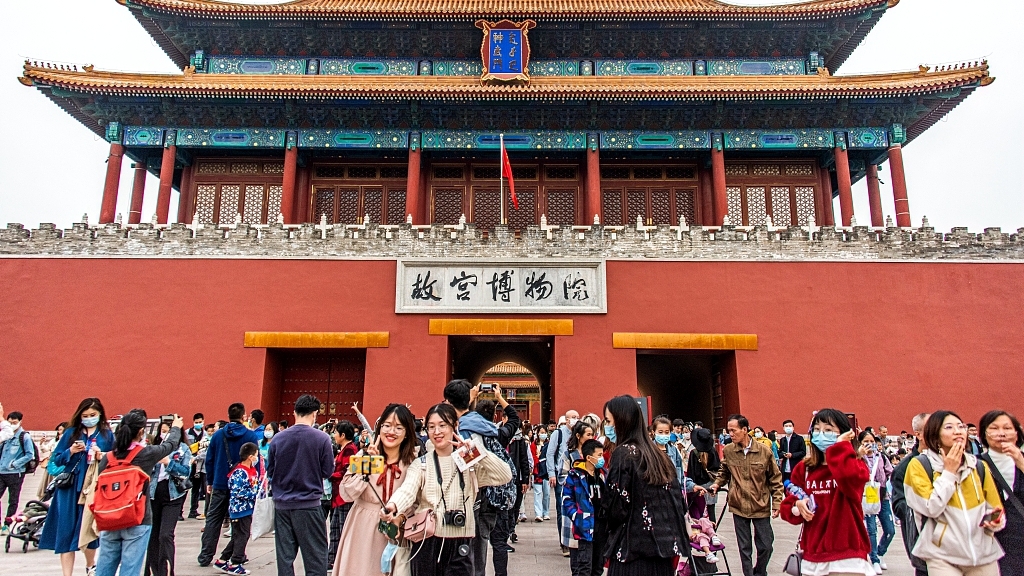What China’s Recovery Reveals About the Post-Pandemic Economy

Due to the many travel restrictions in place urging citizens to avoid unnecessary international travel, a surge in domestic tourism looks set to become one of the biggest trends for the post-pandemic economy.
As one of China’s most important public holidays, Golden Week is eagerly awaited by both citizens and businesses alike. The week-long holiday beginning October 1 to mark China’s National Day usually witnesses the movement of more than 700 million people and sees a huge surge in consumer spending.
This year, as the first public holiday since China’s triumph over COVID-19, Golden Week offered an insight into the strength of China’s post-pandemic recovery.
China-based businesses hoped for a strong rebound in consumption to recoup some of the year’s earlier losses and ensure a speedy V-shaped recovery. Meanwhile, the international business community, viewing this year’s Golden Week as a unique window into a post-pandemic world, also took a keen interest.
So, what did this year’s Golden Week reveal about how has the pandemic changed consumer behavior? What does the data say about the strength of China’s economic recovery? And what does this mean for the wider global economy?
Rise of the staycation
Perhaps unsurprisingly, it was the travel and tourism sector that witnessed the biggest changes. Typically, many people in China use Golden Week to take a trip abroad. But, with most of the world still battling to control the pandemic, this year saw a huge rise in the demand for travel closer to home.
The trend towards a domestic vacation gave China’s travel and tourism sector a much-needed boost. Data from the Ministry of Culture and Tourism showed 637 million trips were made across China during Golden Week, generating around 466.56 billion yuan ($68.71 billion) in revenue. Though lower than recent years, the figures demonstrated a strong post-pandemic recovery of 80 percent and 70 percent respectively.
According to the country’s largest online travel agency Ctrip, bookings for the most popular destinations — including Shanghai, Sanya and Chengdu — were up an incredible 600 percent year-on-year. And with the vast majority of wealthy travelers replacing overseas vacations with domestic trips, demand for luxury hotels and goods surged.
The trend this year was away from large tours set around strict itineraries and towards smaller freestyle trips with close friends and family. Road trips were the number one mode of transport, with some 400 million journeys taken by vehicle.
Yu Dan, a Ctrip spokesperson, attributed this trend to people’s heightened safety awareness since the pandemic. The small, tailored travel plan, usually including a vehicle, driver and sometimes a tour guide, satisfies people’s concerns over public health to reduce unnecessary contact, he said.
While the rise of small travel bubbles was a notable trend this year, more than 164,000 domestic flights were taken during the holiday period – representing an 11 percent increase year on year. Rail travel also experienced a strong post-pandemic recovery as well. According to data from country’s national rail operator China Railway Corp, more than 100 million rail journeys were taken during the week, and a new post-Covid daily record of 15.09 million passengers was set on October 1.
With a great many travel restrictions in place and government’s urging citizens to avoid unnecessary international travel, domestic tourism looks set to become one of the biggest trends during the years ahead.
Weddings up
Another trend witnessed during this year’s Golden Week was a surge in wedding ceremonies. It appears that after months of delayed nuptial celebrations, Chinese couples took full advantage of the holiday to finally tie the knot. As one person quipped, “You are either at a wedding or on the way to a wedding.”
Data from one of China’s largest online shopping platforms showed that the number of bookings for wedding jewelry had increased 137 percent year-on-year. Meanwhile, the number of bookings for wedding planners and bridal dresses were up over 40 percent. Demand for weddings is such that the vast majority of venues are fully booked until June of next year, while some the most popular spots have 12 to 18 month waiting lists.
With wedding ceremonies around the world cancelled due to virus suppression measures this year, an increased demand in all things bridal looks set to become another popular feature of the post-pandemic economy.

China’s rapid recovery
The swift recovery of the domestic tourism sector stimulated consumption and gave the retail and hospitality sectors a much-needed lift. As data from the Ministry of Commerce revealed, daily sales in the retail and restaurant sectors were up 4.9 percent compared to last year’s seven-day holiday – delivering 1.6 trillion yuan ($235.5 billion) in revenue.
The strong consumption data from Golden Week caused stocks to rally. Indeed, three days of consecutive gains resulted in propelling China’s combined stock market value to a record high. According to data compiled by Bloomberg, the market capitalization of all shares listed in Shanghai and Shenzhen reached $10.08 trillion on October 13.
“Investors are looking for growth and finding it very scarce elsewhere – so they see an enormous amount of opportunity in China,” said Craig Coben, co-head of Asia-Pacific global capital markets at Bank of America.
The bigger picture
Thanks to the strong economic data coming out of China, the International Monetary Fund predicts that the global economic collapse caused by the coronavirus won’t be as severe as earlier estimates. In a briefing, IMF Chief Economist Gita Gopinath said China – as the only major economy to grow this year — was pulling up the global numbers, and without China “cumulative growth for 2020 and 2021 is negative.”
According to IMF World Economic Outlook, October 2020, world GDP will fall by 4.4 percent in 2020, and grow by 5.2 percent in 2021, with a cumulative 2020 and 2021 growth of 0.6 percent. China GDP will grow by 1.9 percent and 8.2 percent respectively, with a cumulative 2020 and 2021 growth of 10.3 percent, contributing roughly 1.8 percentage points to the world cumulative growth for the two years. In other words, without China, world GDP will see a cumulative 1.2 percent negative growth for 2020 and 2021.
China’s speedy recovery, economists say, is entirely due to its success in the country’s all-out war against the pandemic. “China has become the first major economy to return to its pre-virus growth path, thanks to its rapid containment of COVID-19 and effective stimulus response,” said analysts from Capital Economics.
Rather than trying to “strike the right balance” between protecting public health and keeping the economy, as many other leaders have. China’s leadership wasted no time in taking unprecedented action and swiftly shut down its entire economy, while the people offered their unremitting cooperation.
As Eswar Prasad, professor of trade policy at Cornell University, concludes: “One lesson here is unless you control the virus, your economy is not going to have much of a recovery.”
 Facebook
Facebook
 Twitter
Twitter
 Linkedin
Linkedin
 Google +
Google +








